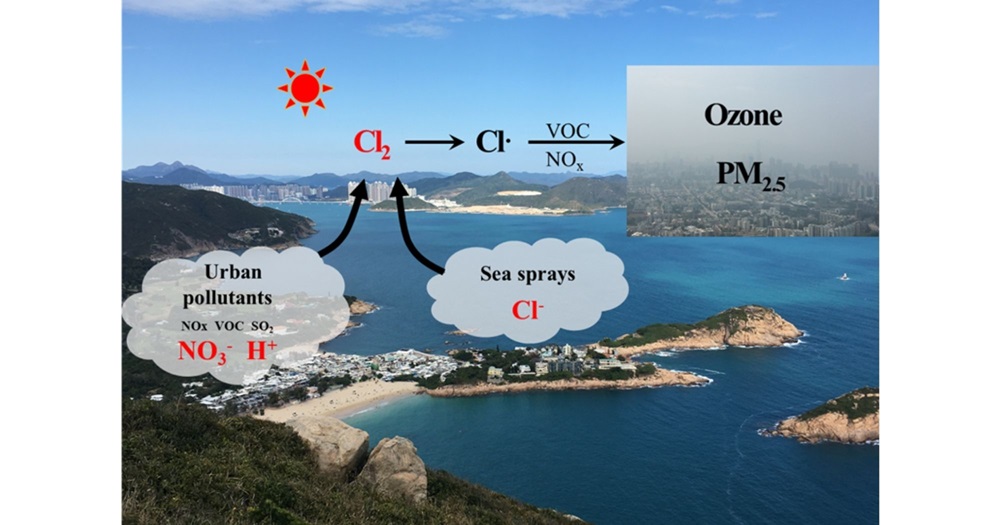Ozone (O3) is an air pollutant that causes eye irritation and respiratory diseases. Despite improvement of overall air quality in Hong Kong in recent years, high concentrations of ozone remain a serious problem in the city. Ozone at ground level is produced by chemical reactions involving volatile organic compounds (VOCs) and oxides of nitrogen (NOx) in the presence of sunlight. The production of ozone is initiated and sustained by radicals – highly reactive oxidants; the conventional radicals are OH, HO2 and RO2 (collectively called ROx radicals).
In a field study at a coastal site in Hong Kong, a team of researchers from the Research Institute for Land and Space (RILS) and the Research Institute for Sustainable Urban Development (RISUD) discovered unprecedented concentrations of molecular chlorine (Cl2) during the autumn when ozone pollution reaches its annual peak. Cl2 was previously known to destroy ‘good ozone’ at high altitudes over the Antarctic, thus allowing cancer-causing ultra-violet sunrays to reach the Earth’s surface. In polluted areas, however, Cl2 can be a ‘new’ radical source of ozone that harms human health and vegetation. In collaboration with international scientists, the field study team found that the high Cl2 concentrations are caused by the interaction of man-made pollutants (NOx and acidic chemicals) with natural sea-spray particles. This pollution pathway is important not only for Hong Kong but also for other coastal cities and for other pollutants like PM2.5. The team’s findings can be used to adjust or refine measures that reduce ozone pollution.
The study results were published recently in Nature Communications. The first author is Dr Xiang PENG, who was a PhD student at the time of this study, and the corresponding author is Prof. Tao WANG, Member of RILS and RISUD and Chair Professor in the Department of Civil and Environmental Engineering (CEE). Other contributing authors include Ir Prof. Hai GUO (Management Committee Member of RILS), Prof. Shuncheng LEE, and additional PhD students and researchers from CEE, personnel from the Hong Kong Environmental Protection Department, and scientists from the US, France, Spain, Sweden, Germany and mainland China. The study was supported by funding from the Hong Kong Research Grants Council, the Agence Nationale de la Recherche, the Swedish Research Council, and the European Research Council.
| 研究部門 | 土地及空間研究院 |
|---|



